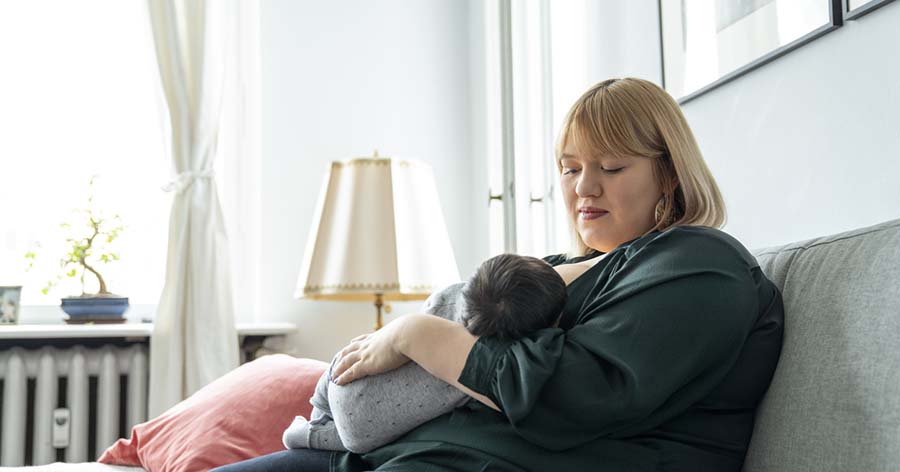There is a significant increase in the number of children and young people diagnosed with type 1 and other variants of diabetes with the long-term complications often first detected in adolescence (Bryden et al, 2003). There is clear evidence that good diabetes control can reduce the incidence and progression of complications, even after a history of poor control (White et al, 2001). However, despite the benefits of intensive insulin regimens and the potential benefits of the introduction of new insulins and methods of insulin delivery, such as insulin pumps, overall metabolic control in children and adolescents has improved little in the UK in the past decade. For example, only 16% of children and young people with type 1 diabetes meet the recommended HbA1c of less than 7.5% (The Healthcare Commission et al, 2006).
In children and adolescents, diabetes control is dependent upon self and family management of the intensive regimens in daily life, as well as a personal adjustment to diabetes, particularly during the developmental changes of adolescence (Anderson et al, 1997; Delamater et al, 2001). The focus of the medical team on biomedical outcomes may not match the treatment goals of the adolescent who is more concerned with the immediate demands of treatment and how to integrate these into daily life (Wolpert and Anderson, 2001). This mismatch can lead to accusations of poor compliance, frustration and conflict and a need to try and find a way to identify achievable shared goals.
For teams without integrated psychological support, young people are often referred to Children and Adolescent Mental Health Services (CAMHS) as a way to both find out why someone is unable to manage their diabetes and, it is hoped, make it possible for them to do so. Sending the young person to another team can remove the opportunity for the diabetes team to understand how they might work differently in the future. Additionally, CAMHS can have long waiting lists, assuming they accept the referral (which is not always the case).
The recent CAMHS ‘mapping’ reported that 18% of young people referred waited over 6 months for an initial appointment (Barnes et al, 2005). Perhaps of even greater concern is how a mental health referral for poor glycaemic control is understood by families who report feeling criticised and blamed for having somehow caused the problem. Resistance can make it a challenge to establish a positive family–diabetes team alliance. Families become defensive and hypervigilant for criticism from the team and less open to working in collaboration.
Parents and children often struggle to include psychological explanations in their understanding of the problem and may not recognise any emotional component to their poor control (Garralda, 1992). Psychological approaches that look for underlying family conflict are often resented while other models, such as cognitive behavioural therapy, may not fit the young person who cannot see a link between their thoughts and the poor control.
The importance of integrating medical care, education and psychosocial interventions has been highlighted in a systematic review by Hampson et al (2001). A recent randomised trial in the US showed that an intensive psycho-educational programme in conjunction with to case management resulted in 25% fewer total hypoglycaemic events, 60% fewer severe hypoglycaemic events and 40% fewer hospitalisations and emergency visits than standard multi-disciplinary care or a simple case management approach (Svoren et al, 2003).
Psychological approaches
This paper describes how integrating psychological approaches enables all team members to have more helpful conversations with young people and families. We invite the individual to see themselves as the expert in their situation in order to identify ‘what works’. Techniques from systemic therapy have been identified as useful ways to engage and empower young people and their families to challenge the symptoms that have knocked them off track (Christie and Fredman, 2001). The aim here is not to lecture on how to be a therapist, but to offer ways to converse with families that will help you listen to what they want and help them hear what might be helpful.
Case study
Jane is 14 years old, with a HbA1c that is always in double figures. She and her mother often miss clinic appointments but are insistent that they are doing everything the team has told them to do. The parents are divorced with the father never attending clinic visits. Jane has particularly poor control when she spends weekends with her father.
You have changed her regimen several times but nothing seems to be helping. Jane and her mother had a fight during the last appointment. The mother has been angry with the team for not being able to ‘sort things out’. You have tried to talk to Jane but she just shrugs when asked if there are any problems. You want her to see the psychologist, but she tells you she ‘isn’t mad in the head’. The team is frustrated and angry; the last time you saw Jane her HbA1c was so high it was off the scale. The last month the mother has phoned frequently as Jane has been unwell. Jane has been off school and has detected low levels of excess ketones in her urine. They are due to attend the next afternoon clinic.
The right frame of mind
So, how are you feeling about this afternoon’s appointment? How do you think the family are feeling about coming to see you? Are you expecting to be criticised by the family for not being able to come up with answers? Are you criticising yourself for not having been able to sort things out? How are you expecting them to be in the consultation? What do you think they are they expecting you to do? How do you talk about them in the team meeting? Perhaps you describe them as a ‘nightmare’ or ‘crazy’. You may be feeling angry as you suspect Jane is missing injections and eating the wrong food but not owning up. It is likely that you are expecting them to be critical and defensive and are also feeling critical and defensive yourself.
All animals, including humans, become ‘mobilised’ if they are expecting to be attacked (Griffiths and Griffiths, 1994). When mobilised we are guarded and act to control our environment. Vigilance to threat is high and attention is focused outward to predict or control the behaviour of prey or adversary (in this case, our client!). Body language is closed (arms folded, clutching a bag or a folder, avoiding eye contact). Verbally, we are dismissive or scornful towards suggestions or comments with constant justification of our actions (for example, ‘I’ve done everything I can’ or ‘they don’t appreciate my efforts’). When mobilised, people cannot hear new ideas and are looking out for actions that confirm their views of each other. It is easy to predict that the clinic visit is unlikely to go well.
By contrast, a tranquil posture enables thoughtful, reflective and helpful interactions, where attentiveness to potential attack and the need to control the environment is minimal. Vigilance to threat is low with attention focused inward. This allows us to be relaxed, to listen, to think, to trust and to consider what is being said without having to rush to justify. As professionals, we need to take responsibility for being aware of our own posture and think about how to help the family adopt a tranquil posture.
Taking time and asking questions
The first step is to reflect on your own posture by inviting a colleague to ask you some questions about Jane and her mother.
- Do they want this meeting?
- What are they expecting?
- How are they likely to feel when they meet you?
- How might they show how they are feeling?
- What might they want you to appreciate about them? For example, are they likely to be focusing on trying to defend themselves from an attack or will they be relaxed and able to listen and reflect on your conversation?
Now think about your own posture and ask yourself the same questions. If you are feeling mobilised and expecting to be attacked then how might this impact on your conversation with them? How will it make you sit? How will it make you sound? What ideas do you have about how you could talk in order to invite a relaxed and open atmosphere? Ask yourself how you would prefer to act around this family and what would help your work with them: Do you want to continue feeling angry and mobilised?
Other questions you might ask are:
- What are the strengths of the young person and the family?
- What has been helpful before?
- What has not been helpful?
- What could you do differently?
Focussing on solutions and strengths
We find it helpful to begin conversations by being interested in the person rather than leaping on the problem. Being curious about the journey to clinic, successes at school and what has been happening in their lives is not just ‘chit chat’ but a way to begin a conversation that invites Jane to identify strengths, abilities and resources that may not have been previously acknowledged.
The intention is to think how these strengths, abilities and resources from a non-problem area might be transferred to the problem area; for example, doing well at school demonstrates intelligence and an ability to learn; having a large group of friends shows social skills, loyalty, ability to listen and help others; and an interest in hobbies and other activities shows a commitment to enjoying life. These examples of determination, a commitment to the future and small successes can be discussed in relation to managing diabetes. The parent can say what she has noticed about Jane that she has been impressed by or describe things that she would describe as a development (however small) since you all last met.
Creating a shared agenda
The next part of the conversation is to invite Jane and her mum to tell you what they want to use the time for. Co-creating the agenda increases people’s motivation to participate and invites greater cooperation. The intention is to indicate to the family that as an expert in their own situation they know what they need to talk about. There are different ways to ask this question. For example:
- ‘As you have come all the way here to meet us today, I want to be as helpful as I can be. If this was going to be a helpful meeting what would be different by the end of our meeting?’
- ‘What would we talk about for this to have been worth your while coming along today?’
- ‘What do you want to make sure we think about today?’
Dealing with the ‘dunno’
Adolescents can often find it difficult to tell you what they want from a conversation. It is possible that they had not even wanted to attend the clinic. Asking questions that invite the young person to say what they think other people might want them to talk about can help them find a way to answer the question and help see if they are aware of concerns other people may have. For example:
- ‘What do you think the doctor/mum/dad would want you to talk about?’
- ‘Are they worried about things you are not particularly worried about?’
- ‘What is worrying making them do?’
This often opens up space to talk about how adults are nagging the young person and provides the opportunity to check if this is something they want stopped. We can also ask them to tell us what they think different people’s ideas about how to solve the problem are and which of these ideas they think are agreeable or not.
Externalising
The way we talk has an impact on how helpful our conversations are. Externalising describes the problem as something that is external to the person rather than a fixed attribute (White, 1988). A small change in language significantly affects how people feel about themselves as well as how we as healthcare professionals feel about them. The ‘diabetic girl’ becomes ‘the girl who is successfully living with the challenges of diabetes’. Externalising locates the problem in the context of someone’s life rather seeing it as an inherent part of them and opens up a space for people to begin to perceive something other than the problem (Freedman and Combs, 1996).
Rather than talking about people having problems or being depressed or aggressive, we think how to describe ‘the diabetes’ or ‘the sadness’ or ‘the anger’ associated with managing the diabetes. We ask what size, shape or colour it would be if we could see it. Mark (8 years old) said that diabetes was a ‘big purple monster with syringes for teeth and needles for a tail’.
Other young people describe diabetes as a ‘bad-tempered imp’ or a ‘nasty gremlin’. We ask what kind of things ‘the problem’ gets them to do. It’s not unusual to be told that anger makes them skip injections or eat chocolate. We ask if they want anger to push them around and how they find ways to put anger in it’s place. Finding a shared language to talk together about the ‘problem’ allows us to speak about how we can all challenge the problem together. This way of talking can also help families see why it might be good to meet with a psychologist to think about how to put sadness, worry or anger in it’s place.
Conclusion
This is not ‘Pollyanna’ therapy. We know that people’s problems are real and must be taken seriously. Problems will always find you; however, our aim is not to give the problem too much oxygen. We listen carefully and validate and acknowledge the difficulties but, having heard about the problem, we start to ask questions about the times when people are in charge of the situation and how they are able to do this. Our experience is that the quickest and most long-lasting change comes from inviting people to tell us about what has gone well, even if it only lasted 30 seconds. Asking questions that invite young people to tell us about the solutions they have already tried means that we can feel less anxious about always needing to know all of the answers. While problems may be complex, they may not always need complex solutions.





Using HCL technology to the best effect in women with type 1 diabetes.
20 Feb 2025